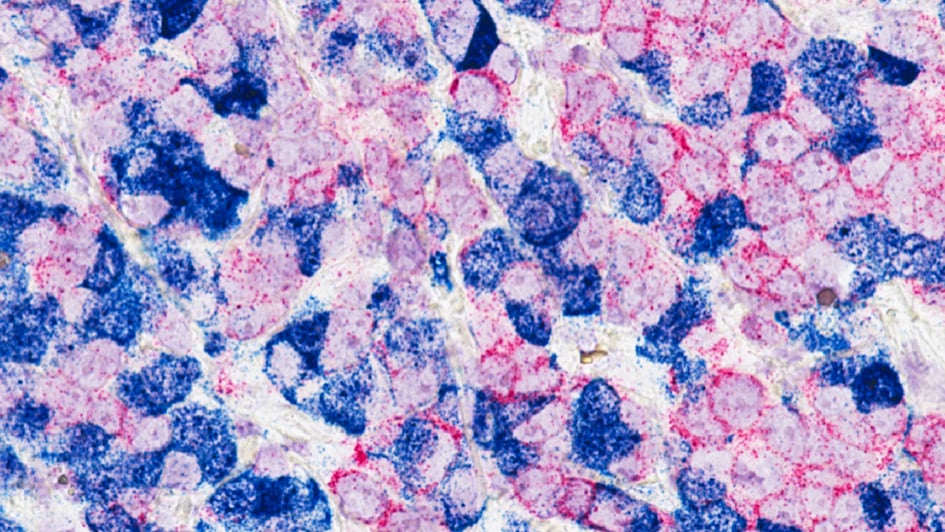June 2021
New drug class could treat range of cancers with faulty BRCA genes

Image: Breast cancer cells. Credit: Min Yu, National Cancer Institute \ USC Norris Comprehensive Cancer Center
Scientists led by Professor Chris Lord, who leads the Gene Function Team, have identified a new class of targeted cancer drugs that offer the potential to treat patients whose tumours have faulty copies of the BRCA genes. The drugs, known as POLQ inhibitors, specifically kill cancer cells with mutations in the BRCA genes while leaving healthy cells unharmed. This class of drugs can kill cancer cells that have become resistant to existing treatments for patients with BRCA mutations.
POLQ inhibitors could enter the clinic as a new approach to treating a range of cancers with BRCA mutations, such as breast, ovarian, prostate and pancreatic cancer. Genetically removing a protein known as POLQ destroys cells with BRCA gene defects, but drugs that prevent POLQ from working had not been identified until now.
New POLQ inhibitors could provide a new approach to treating cancers with BRCA gene defects, on top of existing PARP inhibitors. This is important since POLQ inhibitors should retain their activity in cancers that have developed resistance to PARP inhibitors, giving patients more options for treatment.